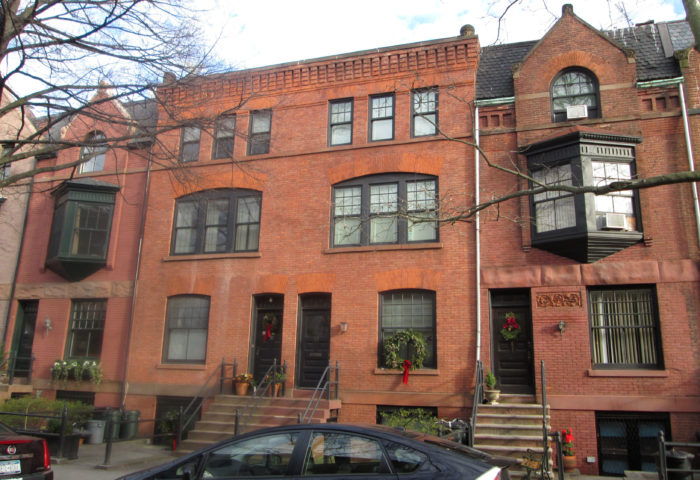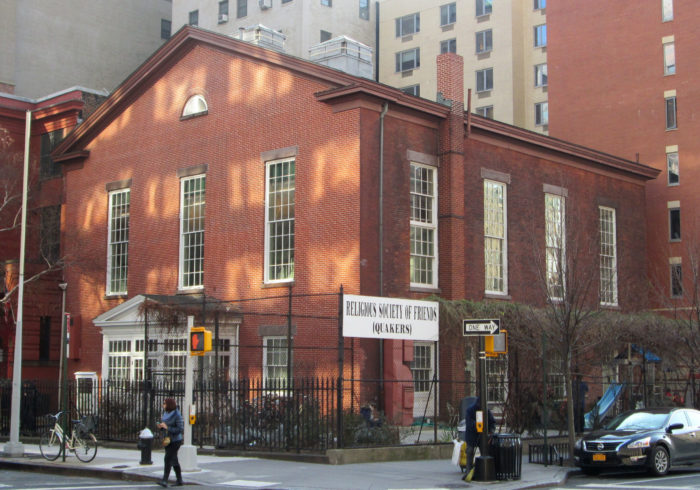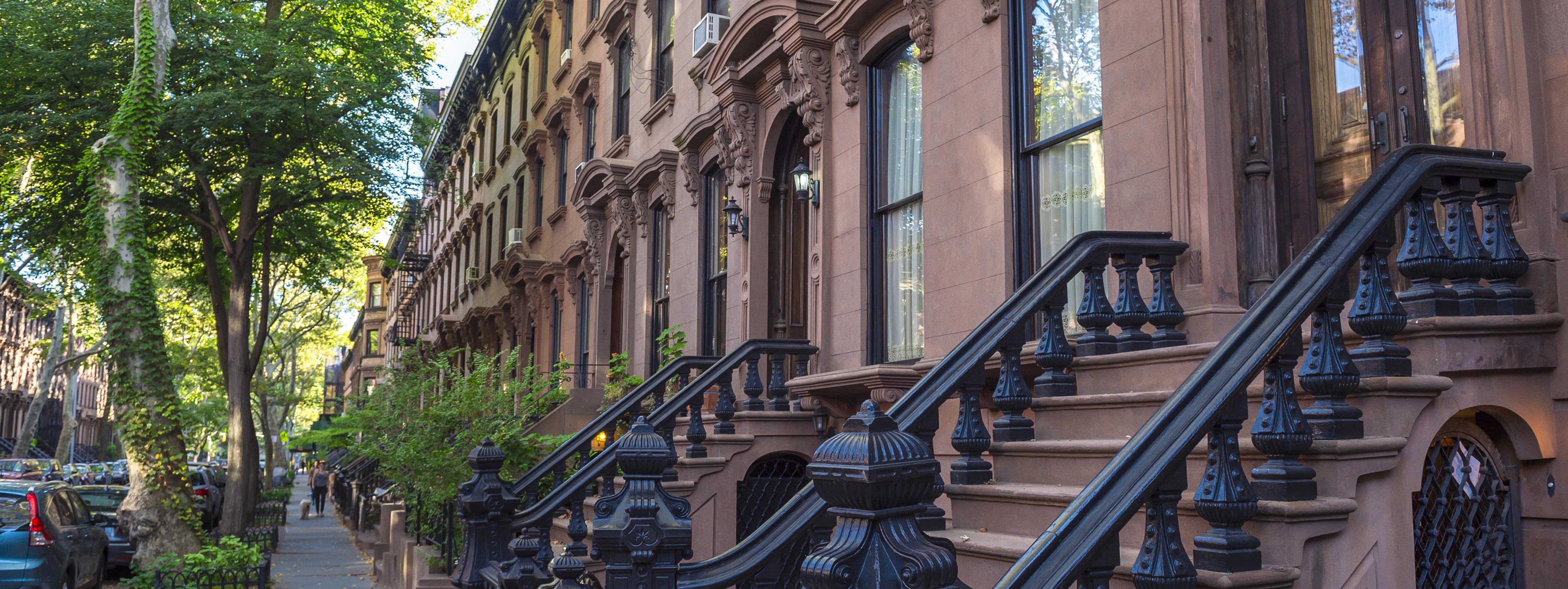Shakespeare contended that a rose by any other name would smell as sweet, but would Cobble Hill be as desirable a place to live if it were still dubbed Ponkiesburgh? For that matter, would Boerum Hill lose some of its charm if it had been more accurately named Boerum Flat? And what if Carroll Gardens was called Red Hook Junior?
It was not until the late 1950s-mid-1960s that these three neighborhoods gained official monikers. For most of Brooklyn’s history as a village, then a city, and even after it became part of New York City in 1898, these three neighborhoods were considered part of the larger South Brooklyn neighborhood (which confusingly enough, is not the southernmost part of the borough but was south of the original Brooklyn village). The neighborhoods now known as Gowanus, Park Slope, and Red Hook were also part of South Brooklyn.

Strong Place in Cobble Hill, with houses built in 1891. Image: Beyond My Ken/Wikimeda
Cobble Hill’s name dates back to the Dutch settlers of the mid-17th century. A hill did indeed dominate the area and was once the site of a fort—though the British leveled the hill during the Revolutionary War so that the rebels could not use it to look onto the army’s Brooklyn Heights headquarters. What’s more, the area was rich with cobbles, the small stones that become cobblestone when set in sand or mortar. So the Dutch dubbed the area Ponkiesburgh, which translates into English as Cobble Hill. The neighborhood retained the English name after the war, but by the late 1800s it had been forgotten. Only when the area attracted the attention of developers in the 1950s was the name revived, to set the locale apart from other parts of South Brooklyn that were not considered as desirable.

The Friends Meeting House at Boerum Place and Schermerhorn Street, build in 1857. Image: Beyond My Ken/Wikimedia
Unlike Cobble Hill, Boerum Hill never had a hill, and there is no record of how that nonexistent topographical feature made it into the neighborhood’s name. There was a Simon Boerum, however. The son of Dutch settlers, he was appointed county clerk of Kings County and represented Brooklyn in the 1774-75 Continental Congress. Boerum owned a home at what is now the southwest corner of Fulton and Hoyt Streets (currently the site of a Kay Jewelers). When the founder of the nascent neighborhood association was casting about for a moniker for said neighborhood in the early 1960s, she no doubt decided naming after a Colonial mover and shaker would give the area a historic imprimatur.

A portrait of Charles Carroll III, after whom Carroll Gardens was named, by Michael Laty. Image: public domain/Wikimedia
Carroll Gardens was named after another Revolutionary figure: Charles Carroll III, the only Catholic signer of the Declaration of Independence. Carroll never lived in Brooklyn; born and raised in Maryland, he was the state’s first U.S. senator. But he did command a Maryland regiment during the Battle of Brooklyn in 1776. A street was subsequently named after him, then a park. By the time the Brooklyn-Queens and Gowanus Expressways cut the area off from Red Hook around the time of World War II, residents of the orphaned area were sometimes called Creekies or Creekers, after the Gowanus Creek. (As unpleasant as “Creekers” might sound, it could have been worse; denizens of Red Hook proper were dubbed Hookers.) A neighborhood improvement association adopted the name Carroll Gardens in 1964, with “Gardens” referring to the sizable (for Brooklyn) front yards of the brownstones along First through Fourth Places, which date back to the mid-19th century.






